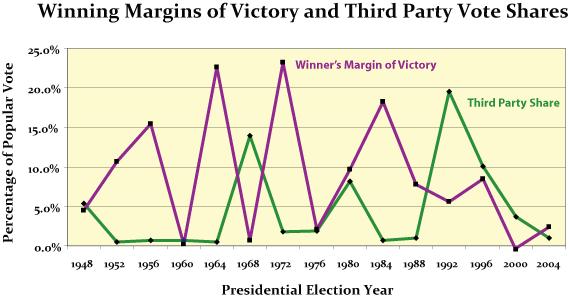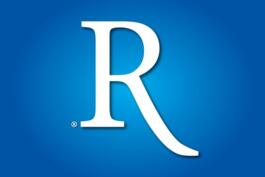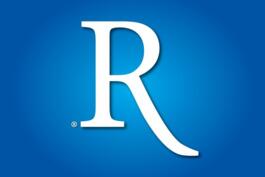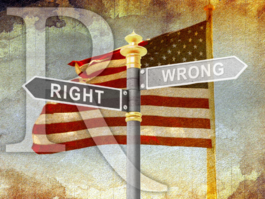Going for the Bronze
A Commentary By Rhodes Cook
When political reporters run low on topics to write about, they often turn their attention to third parties--the "lovable losers" of American politics. They never win at the presidential level but often are called upon to add color to campaigns that are sometimes badly in need of it.
Not since 1972 has a third party actually won an electoral vote. Not since 1968 has an independent or third party candidate carried a state. What interest they draw is usually reserved for "celebrity candidates," which New York Mayor Michael Bloomberg would certainly have been if he had chosen to mount an independent candidacy in 2008.
When he did not, the brief focus on third parties rapidly receded. But in a close election this fall they could emerge as the balance of power, drawing votes that could tip battleground states to Democrat Barack Obama or Republican John McCain. Or maybe, if a number of states are closely contested, they might push some states to Obama and others to McCain.
Figure 1. THIRD PARTIES SINCE WORLD WAR II: AFFECTING THE ELECTION OUTCOME
In six of the 15 presidential elections since World War II, the overall third party vote has exceeded the Democratic or Republican margin of victory in the popular vote. Those half dozen elections are indicated below in BOLD. The number includes the trio of contests from 1992 through 2000, when none of the winners attained a majority of the popular vote.
|
Election |
Third Party Share of Popular Vote |
Dem. or Rep. Margin of Victory |
Winner |
||
|
1948 |
5.4% |
4.5% |
D - Truman* |
||
|
1952 |
0.5% |
10.7% |
R - Eisenhower |
||
|
1956 |
0.7% |
15.4% |
R - Eisenhower* |
||
|
1960 |
0.7% |
0.2% |
D - Kennedy |
||
|
1964 |
0.5% |
22.6% |
D - Johnson* |
||
|
1968 |
13.9% |
0.7% |
R - Nixon |
||
|
1972 |
1.8% |
23.2% |
R - Nixon* |
||
|
1976 |
1.9% |
2.1% |
D - Carter# |
||
|
1980 |
8.2% |
9.7% |
R - Reagan# |
||
|
1984 |
0.7% |
18.2% |
R - Reagan* |
||
|
1988 |
1.0% |
7.8% |
R - Bush |
||
|
1992 |
19.5% |
5.6% |
D - Clinton# |
||
|
1996 |
10.1% |
8.5% |
D - Clinton* |
||
|
2000 |
3.7% |
- 0.5% |
R - G.W. Bush |
||
|
2004 |
1.0% |
2.4% |
R - G.W. Bush* |
Note: An asterisk (*) indicates an incumbent president. A pound sign (#) denotes that the winner defeated an incumbent president. The third party total includes the vote cast for third party and independent candidates, miscellaneous write-in votes, and independent and unpledged Democratic slates of electors (in 1956, 1960 and 1964).
Source: America Votes (CQ Press).
That is essentially what happened in the "even-steven" election of 2000. Ralph Nader, the Green Party nominee that year, clearly cost the Democrats Florida, where he drew nearly 100,000 votes in a state that Democratic nominee Al Gore lost by just 537. And Nader arguably deprived Gore of New Hampshire as well, where the Green vote was more than three times as large as Republican George W. Bush's margin over Gore. Taken together, that is 29 electoral votes that Gore would probably have won without Nader on the ballot, easily exceeding the Democrat's five-vote deficit in the Electoral College.
Yet if Bush had lost in 2000, he could very well have pointed to conservative Reform Party nominee Pat Buchanan as a reason why. If Buchanan were not on the ballot that year, and his votes had gone to Bush, the Republican would have carried four more states--Iowa, New Mexico, Oregon and Wisconsin--with a total of 30 electoral votes.
In short, the third parties cut both ways in 2000. The question now is whether they will play a significant role this time as they did eight years ago. Or whether the voting this fall will be along the lines of 2004, when there was virtually no demand for third party alternatives since a clear-cut choice between Bush and Democrat John Kerry was available.
A lot will depend in the weeks ahead on the nature of the race between McCain and Obama. Will it develop into a blow out in favor of one candidate or the other, or will it remain close? If it is the latter, third parties are poised to play an influential role as they did in 2000.
Figure 2. WINNING THE BRONZE: TOP THIRD PARTY SHOWINGS IN EACH PRESIDENTIAL ELECTION SINCE WORLD WAR II
No third party or independent candidate has finished as high as second in any presidential election since former President Theodore Roosevelt's Progressive Party ("Bull Moose") run in 1912. Since World War II, an eclectic array of entities have captured the "bronze", from the Southern-based states' rights candidacies of Strom Thurmond and George Wallace to the recent campaigns of the liberal Ralph Nader. The Libertarian Party has been "the best of the rest" twice, most recently in 1988 when Ron Paul led the ticket. This year, Paul ran in the GOP primaries as a libertarian Republican, and received close to 1.2 million votes.
|
Election |
Candidate (Party) |
Vote for Leading Third Party |
% of Vote for Leading Third Party |
|||
|
1948 |
Strom Thurmond (States' Rights Democrat) |
1,169,114 |
2.4% |
|||
|
1952 |
Vincent Hallinan (Progressive) |
140,023 |
0.2% |
|||
|
1956 |
T. Coleman Andrews (Constitution) |
111,178 |
0.2% |
|||
|
1960 |
Eric Haas (Socialist Labor) |
47,522 |
0.1% |
|||
|
1964 |
Eric Haas (Socialist Labor) |
45,219 |
0.1% |
|||
|
1968 |
George Wallace (American Independent) |
9,906,473 |
13.5% |
|||
|
1972 |
John Schmitz (American) |
1,099,482 |
1.4% |
|||
|
1976 |
Eugene McCarthy (Independent) |
756,691 |
0.9% |
|||
|
1980 |
John Anderson (Independent) |
5,720,060 |
6.6% |
|||
|
1984 |
David Bergland (Libertarian) |
228,314 |
0.2% |
|||
|
1988 |
Ron Paul (Libertarian) |
432,179 |
0.5% |
|||
|
1992 |
Ross Perot (Independent) |
19,741,657 |
18.9% |
|||
|
1996 |
Ross Perot (Reform) |
8,085,402 |
8.4% |
|||
|
2000 |
Ralph Nader (Green) |
2,882,738 |
2.7% |
|||
|
2004 |
Ralph Nader (Independent) |
465,650 |
0.4% |
|||
Note: In 1956, 1960 and 1964, targeted slates of independent and unpledged Democratic electors received more votes than the leading third party. Some sources list Strom Thurmond's vote in 1948 as 1,176,125, which includes uncertified results from several dozen counties in Texas.
Source: Guide to U.S. Elections, Volume I (CQ Press); America Votes (CQ Press).
Clearly Obama and McCain have more voter persuasion to do than did either Bush or Kerry in 2004. Then the race was essentially a referendum on Bush's controversial presidency, with millions and millions of voters holding strong views pro and con. This year, there is more ambiguity about the major party candidates. Both are in the process of selling themselves to the American electorate, after a primary season in which neither Obama nor McCain won a majority of their party's primary vote.
As was the case eight years ago, voters dissatisfied with the major party candidates have options available on either side of the political spectrum. On the right (more or less), is the Libertarian Party, which has nominated former Republican Rep. Bob Barr, 59, of Georgia as its standard-bearer.
The party accents individual rights and responsibilities over government activism. And while it draws votes from all parts of the political continuum, the Libertarians are expected to be much more of a problem for McCain than Obama. In this year's GOP presidential primaries, Rep. Ron Paul of Texas ran as a libertarian Republican and drew nearly 1.2 million votes.
On the left, there are two significant alternatives that could siphon votes from Obama. One is the Green Party, which has nominated former Democratic Rep. Cynthia McKinney, 53, an African-American woman who once represented a district on the other side of Atlanta from Barr's. Another option for disaffected liberals is the indefatigable Ralph Nader, 74, who is making his fourth bid for the White House since 1996. As in 2004, the fabled consumer advocate is running as an independent.
Ballot access drives are still going on in a number of states and a complete listing of who is running where will probably not be available until mid-September or so. But already, according to the San Francisco-based newsletter, Ballot Access News, the Libertarians, Greens, and Nader are all on the presidential ballot in the battleground states of Arizona (10 electoral votes), Colorado (9), Nevada (5) and New Mexico (5). The Libertarians and Greens are both on in Florida (27), Michigan (17), Oregon (7) and Wisconsin (10). And the Libertarians have ballot status in Missouri (11) and Ohio (20), as well as Barr's home state of Georgia (15), which the Obama forces are trying to turn into a battleground.
In short, third parties are poised to play a significant role in the 2008 presidential election...if McCain and Obama stay close enough to let them.
Figure 3. TOP THIRD PARTY CANDIDATES: THOSE THAT RECEIVED AT LEAST 5% OF THE TOTAL VOTE
The two-party monopoly in presidential elections has been difficult for third parties to crack. With virtually all the states employing winner-take-all in the awarding of their electoral votes, a third party or independent candidate must have a strong regional base in order to win any. It was a necessity that Ross Perot conspicuously lacked in 1992, when he won nearly 20 percent of the popular vote but not a single electoral vote. Altogether in the last two centuries, the number of third party and independent candidates who have drawn even 5 percent of the popular vote totals only a baker's dozen. And the list includes three former presidents--Theodore Roosevelt, Millard Fillmore and Martin Van Buren.
|
Candidate (Party) |
Election |
% of Popular Vote |
Electoral Vote |
States Carried |
||
|
Theodore Roosevelt (Progressive) |
1912 |
27.4% |
88 |
6 - CA, MI, MN, PA, SD, WA |
||
|
Millard Fillmore (Whig-American) |
1856 |
21.5% |
8 |
1 - MD |
||
|
Ross Perot (Independent) |
1992 |
18.9% |
0 |
- |
||
|
John Breckinridge (Southern Democrat) |
1860 |
18.1% |
72 |
11 - AL, AR, DE, FL, GA, LA, MD, MS, NC, SC, TX |
||
|
Robert La Follette (Progressive) |
1924 |
16.6% |
13 |
1 - WI |
||
|
George Wallace (American Independent) |
1968 |
13.5% |
46 |
5 - AL, AR, GA, LA, MS |
||
|
John Bell (Constitutional Union) |
1860 |
12.6% |
39 |
3 - KY, TN, VA |
||
|
Martin Van Buren (Free Soil) |
1848 |
10.1% |
0 |
- |
||
|
James Weaver (Populist) |
1892 |
8.5% |
22 |
5 - CO, ID, KS, NV, ND |
||
|
Ross Perot (Reform) |
1996 |
8.4% |
0 |
- |
||
|
William Wirt (Anti-Masonic) |
1832 |
7.8% |
7 |
1 - VT |
||
|
John Anderson (Independent) |
1980 |
6.6% |
0 |
- |
||
|
Eugene Debs (Socialist) |
1912 |
6.0% |
0 |
- |
||
Note: In 1856 the fading Whig Party endorsed former President Millard Fillmore, who had been nominated earlier in the year by the American (or "Know-Nothing") Party.
Source: Guide to U.S. Elections, Volume I (CQ Press).
See Other Commentary by Rhodes Cook
See Other Political Commentary
Views expressed in this column are those of the author, not those of Rasmussen Reports.
Rasmussen Reports is a media company specializing in the collection, publication and distribution of public opinion information.
We conduct public opinion polls on a variety of topics to inform our audience on events in the news and other topics of interest. To ensure editorial control and independence, we pay for the polls ourselves and generate revenue through the sale of subscriptions, sponsorships, and advertising. Nightly polling on politics, business and lifestyle topics provides the content to update the Rasmussen Reports web site many times each day. If it's in the news, it's in our polls. Additionally, the data drives a daily update newsletter and various media outlets across the country.
Some information, including the Rasmussen Reports daily Presidential Tracking Poll and commentaries are available for free to the general public. Subscriptions are available for $4.95 a month or 34.95 a year that provide subscribers with exclusive access to more than 20 stories per week on upcoming elections, consumer confidence, and issues that affect us all. For those who are really into the numbers, Platinum Members can review demographic crosstabs and a full history of our data.
To learn more about our methodology, click here.




